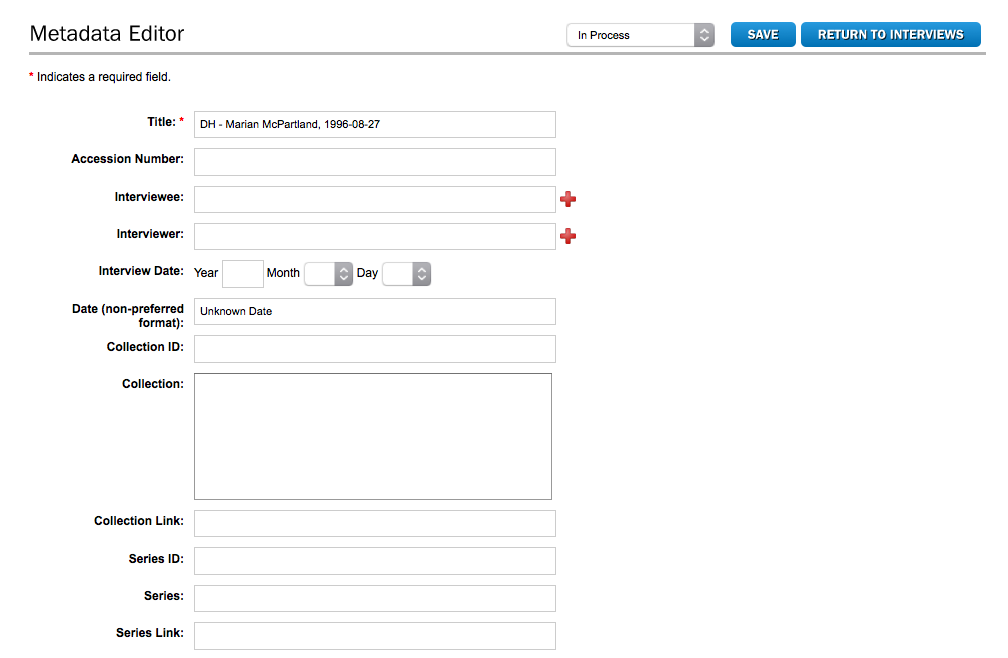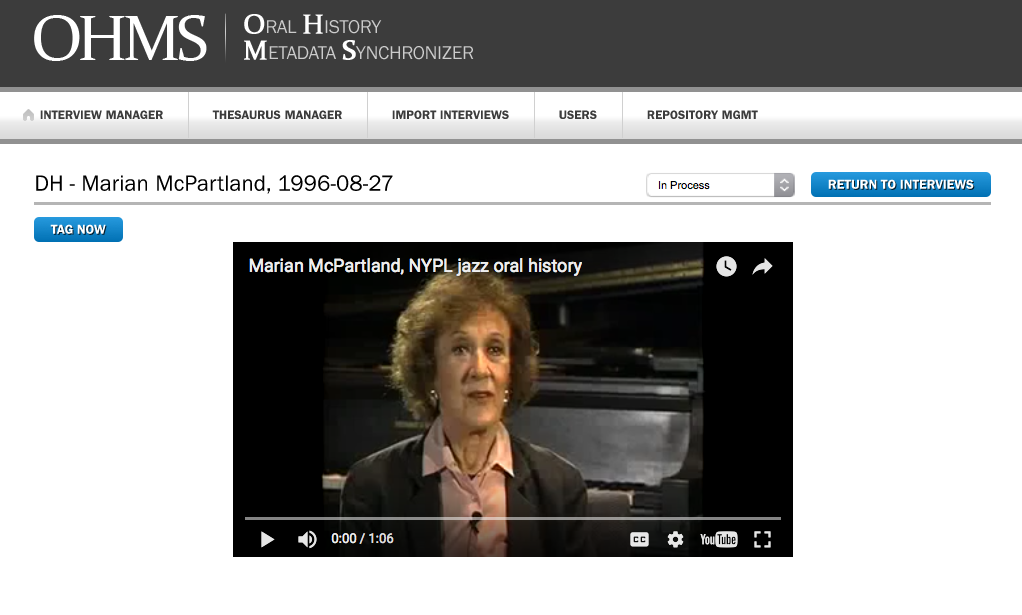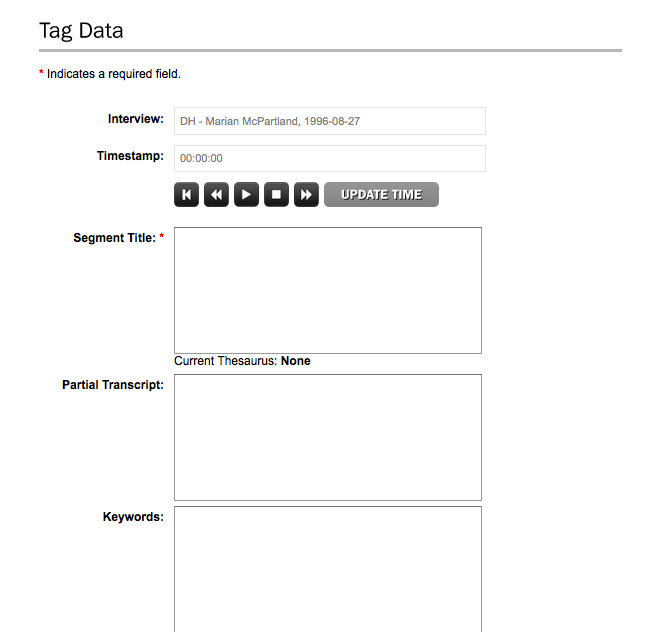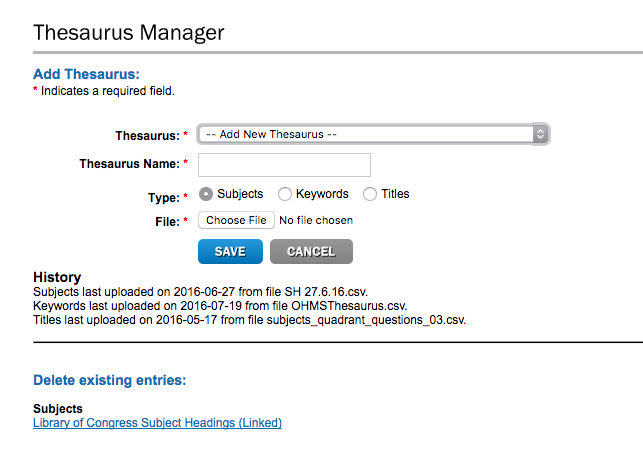The Oral History Metadata Synchronizer is a tool developed at the Louie B Nunn Center for Oral History at the University of Kentucky. It is designed to increase efficient access to oral histories. The system uses interoperable/sustainable file-formats and non-proprietary software to allow visitors to engage with oral histories more meaningfully.
Two parts:
- OHMS application:
- a web-based application that allows users to: import interviews, create metadata, time-code transcripts, and index interviews. This content is exported as an XML file (eXtensible Markup Language). These files must be placed on a server.
- must have an account
- OHMS viewer:
- a user interface that loads synced video/audio files, metadata, and transcript from the XML file.
- works with content management systems.
OHMS Application Interface:
- Interview Manager (1)
- Metadata Manager (A)
- Indexing Module (B)
- Transcript Synchronization Module (C)
- Thesaurus Manager (2)
- Interview Import (3)
- User Management (4)
Metadata Editor:
Metadata can be created or imported in OHMS.
- From the Interview Manager, select the Metadata Editor for the interview you would like to edit.
- Each interview must have at least three metadata fields:
- Title
- Media Format
- Media Connection – depending on the connection type, this includes; Media URL, Media Host ID Information, and/or an iFrame Embed Code.
- Note: not all the fields will be visible in the viewer, however, all will be exported and can be indexed.

Indexing Module:
- From the Interview Manager, select Index for the interview you would like to edit.
- In the module, click play on the media player.

- Click Tag Now for the Tag Data frame.

- Control the media using the player inside the Tag Data frame.
- Utilize the metadata fields to capture and display information about the segment.
- Time Stamp: automatically populated when you click “Tag Now.” Adjust by
- Segment Title: A descriptive title of the segment (Required, can be populated using a preselected Thesaurus).
- Partial Transcript: First words of segment, 140 characters (Recommended)
- Keywords: (Multiple entries can be used, separated by semi-colon, can be populated using a preselected Thesaurus)
- Subjects: (Multiple entries can be used, separated by semi-colon, can be populated using a preselected Thesaurus)
- Segment Synopsis: A descriptive statement about the interview segment.
- GPS Coordinates: Coordinates are entered in the format “XX.XXX, YY.YYY”, where X is latitude (north or south) and Y is longitude (east or west). Only one set of coordinates is allowed per segment at this time.
- GPS Zoom: A dropdown, this field can determine a custom zoom level for the OHMS Viewer.
- GPS Description: Location information.
- Hyperlink: Link to outside resource (One link per segment).
- Link Description: Title or description of the hyperlink.
Thesaurus Manager:

- A controlled vocabulary may be utilized for the Title, Subjects, and Keywords fields of the Indexing Module. (Each field can be assigned a separate thesaurus. A thesaurus is assigned to a field in the Metadata Module.)
- Library of Congress Subject Headings (Linked)
- Customized vocabulary (uploaded as .csv file, with a single column of terms)
- This creates a drop-down menu in the Index for the selected fields.
Transcript Sync:
- A prepared transcript may be uploaded and synced with the media file. Visitors will be able to search across these texts and navigate to pertinent content within the Interview.
The OHMS team has produced extensive documentation:

